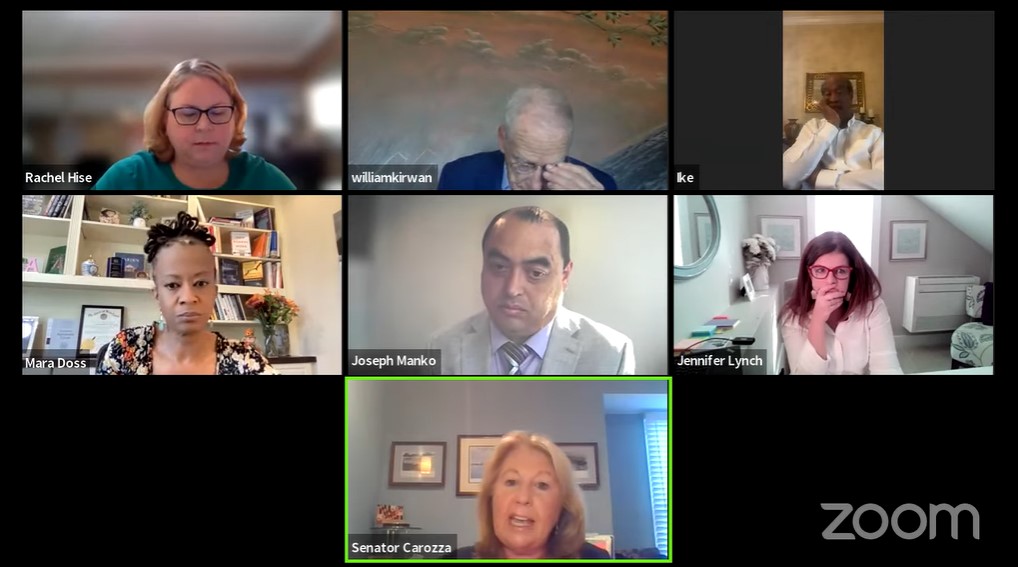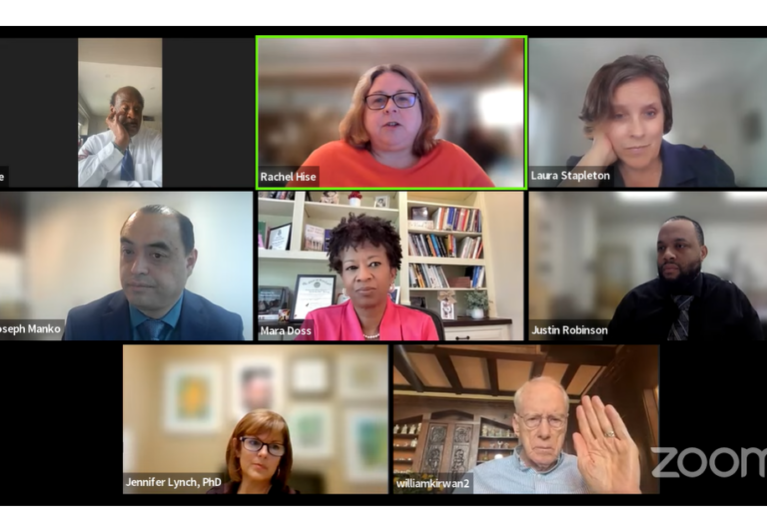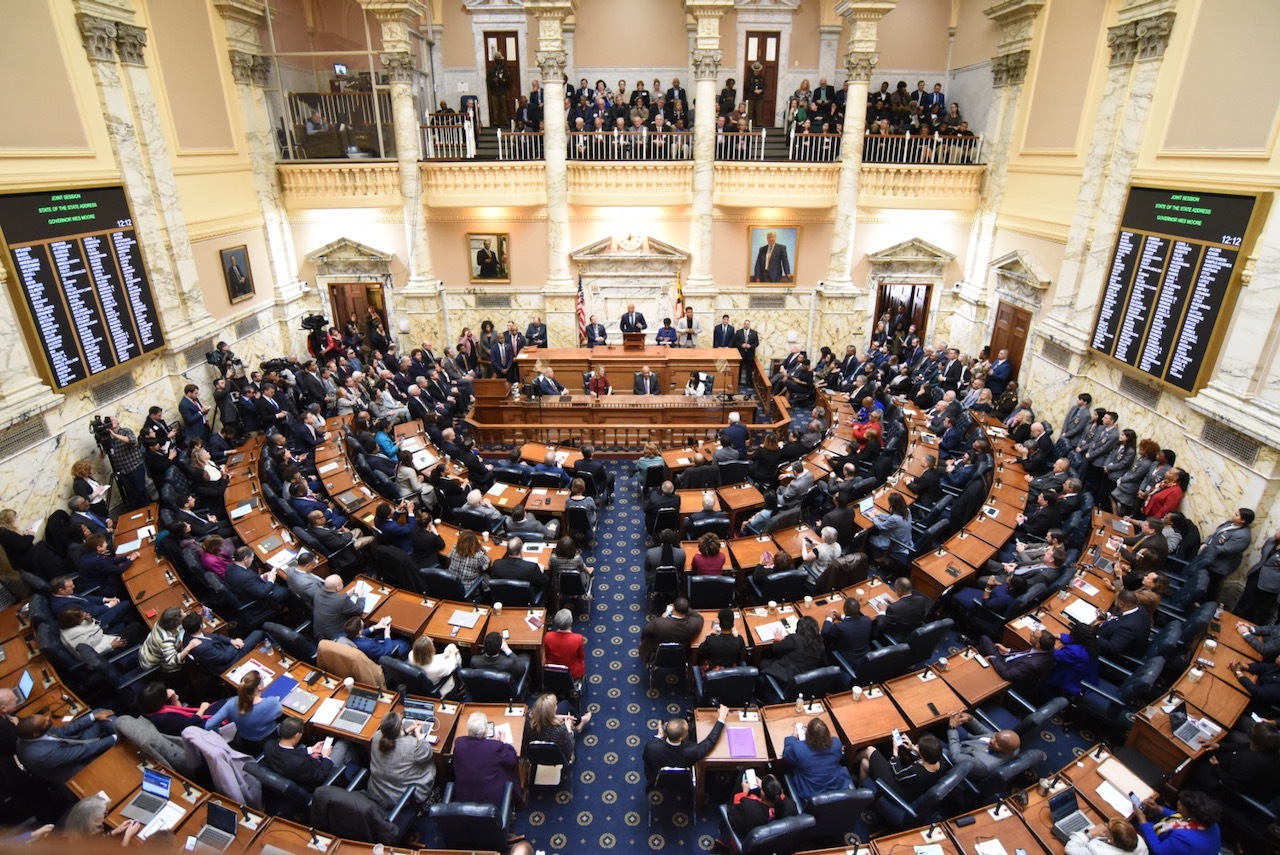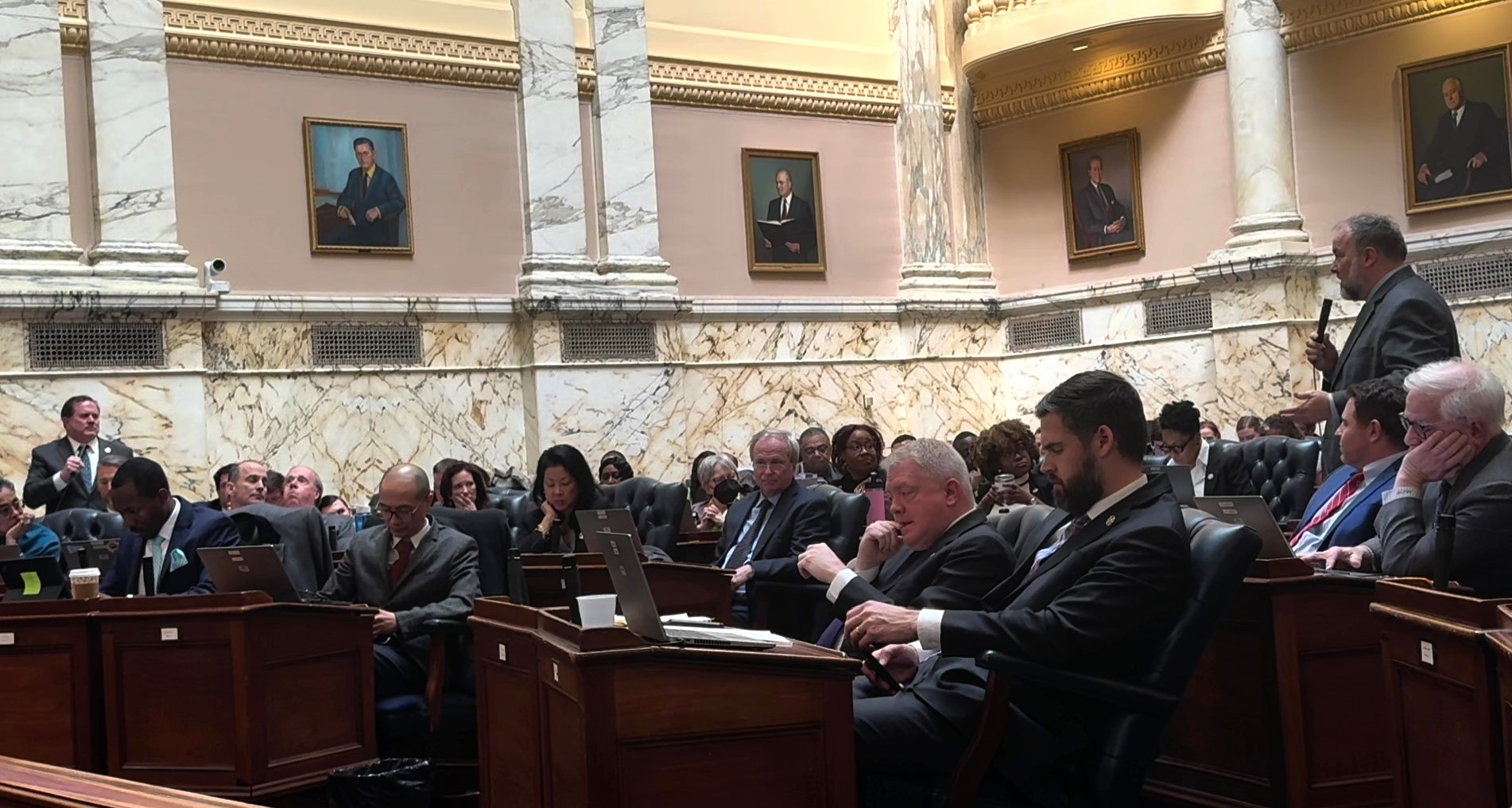At hearing, dozens offer their suggestions for tweaking education reform plan

Forty-one people who testified during a virtual public hearing Thursday afternoon said some important items have been left out of Maryland’s nearly 180-page Blueprint for education plan.
Among the missing, they said, are a specific process to integrate arts education into the overall plan, an adequate definition of cultural competency for school staff and flexibility to raise the minimum teacher salary above $60,000 to keep pace with inflation.
Cultural competency, collaboration and fidelity were some phrases that educators, advocates, parents, as well as community leaders echoed at the hearing held by the Blueprint for Maryland’s Future Accountability and Implementation Board, which was charged with drafting a plan to implement the multi-billion-dollar education reform plan passed by lawmakers.
“I do have faith in the AIB to really be concerned about this and to delve into it,” said Shamoyia Gardner, executive director of Strong Schools Maryland. “I wish there were some things we didn’t have to dive into. I just really hope they take that message into heart.”
The 10-year reform plan includes expanding prekindergarten enrollment for 3- and 4-year-olds, establishing a program to ensure that more teachers become nationally certified and dedicating Maryland Department of Education staff to enhance student behavioral health services.
Four advisory committees are expected to offer recommendations to delete, restructure, or tweak policies in the plan for the Blueprint board before it votes on a final draft by Dec. 1.
Those who want to testify on the plan but could not participate in virtual hearings Thursday afternoon and evening can submit written comments via email to [email protected] on or before Nov. 23.
Board chair Isiah “Ike” Leggett offered a straight-forward, but stern reminder of what Thursday’s hearing was about.
“Keep in mind [the plan] says draft. D.R.A.F.T.,” he said. “We are not, at this point, in a position to change significantly the overall Blueprint. This is not about rewriting the legislation. This is about how we can make the plan more efficient and effective so we can move forward.”
Several people offered thoughts and recommendations on what the board should do before approving the plan and sending it to the governor and General Assembly.
Joy Twesigye, a nurse practitioner and board president with Maryland Assembly of School-Based Health Care, said the state health department should coordinate with local school leaders on where to place health centers.
Sen. Mary Beth Carozza (R-Lower Shore), who serves on the Education, Health and Environmental Affairs Committee, read a litany of concerns about the Blueprint draft:
- National Board Certification doesn’t necessarily correlate with better teaching or student achievement, so automatically raising a salary for certification is questionable
- Increasing teacher salaries to $60,000 would financially burden small school systems such as Worcester County.
- Expanding prekindergarten would be difficult in Wicomico County because the number of childcare providers is limited and schools lack the space that would be required.
“Bottom line, I believe we need to make the planning workload more manageable, especially for our small [school] systems to emphasize local flexibility and local authority,” she said. “I would be requesting that we simplify the process as much as we can.”
Afie Mirshah-Nayar, president of the Maryland Association of Secondary School Principals, questioned the requirement that assistant principals “shall” teach. She asked how school administrators would manage their daily tasks with assistant principals committed to classrooms.
Mirshah-Nayar said her assistant principal at Paint Branch High School in Montgomery County is only certified to teach physical education.
“Many of us left the classroom so that we would have a larger impact beyond the walls of just a single classroom,” she said. “We don’t want to devalue the role of administrators by asking them to teach because our job is very, very different. There are so many questions.”
Leggett said university presidents, chancellors and provost teach on college campuses.
“I would like to hear a little bit more about why it cannot be done on a principal or an associate principal level,” he said.
“I would love to have you come visit me at Paint Branch High School [with] me and my team for the day and you will see exactly why our day with 2,200 students and the pace that we teach is a lot different than a university chancellor,” Mirshah-Nayar told Leggett. “You are welcome to come anytime, sir.”
Several people spoke on behalf of arts education in Maryland schools.
Christen Cromwell, a high school drama teacher in Baltimore County, said there should be traditional and alternate pathways for the arts. Cromwell suggested that the state Department of Education collaborate with the state Higher Education Commission to create and implement educator degree and certification programs to include dance, media arts, music, theater and visual arts.
Peter Dayton, director of operations for the group Arts Education Maryland Schools and a composer, said the college and career readiness portion of the plan should prioritize “creative scheduling” to avoid circumstances such as a ninth-grade band student not being able to schedule those classes because of conflicts with too many core requirements.
“Education without the arts is not a world class education,” Dayton said.
The Accountability and Implementation board plans to hold another virtual meeting at 1 p.m. on Nov. 17.




 Creative Commons Attribution
Creative Commons Attribution